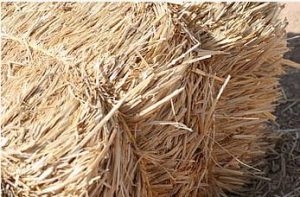An effective rearing and ranching tool, baler twine, is a fibrous, high protein product that helps with hay production. It is formed from the plant parts of the pleurothallis plant. It is an insecticide that is safe for grazing and is made from the reeds of the bush.
Baled hay products are created using baler twine. With Baler-Twine, the grass is soaked in a solution of methylene blue, then fed to the cattle so that it has a dye in it.
Baled hay products from baler twine are much more abundant in fat and nutrients than straw from hay bales. It makes it easier to absorb for the cows. It also reduces the need for mowing and doesn’t end up trampling.
 Hay products from baler twine are often used on pasture before the calves arrive to add the essential vitamins and minerals to their feeds. Cows will eat the Baled hay since they love fat and will still need the silage as part of their diet. It also helps to get some of the nutrients into the grass that cows eat.
Hay products from baler twine are often used on pasture before the calves arrive to add the essential vitamins and minerals to their feeds. Cows will eat the Baled hay since they love fat and will still need the silage as part of their diet. It also helps to get some of the nutrients into the grass that cows eat.
A baled feed is available as a dry or liquid form. The liquid form of a baled feed helps with the process of silage storage. A baled feed can be used for either livestock or used for your consumption.
Some things need considerations when making baling twine feed for your cattle. Things such as ensuring the silage are well dried, and guaranteeing the baler twine is appropriately processed, reducing the amount of silage to feed on and reducing the time of the silage storage are all vital elements of feeding the cattle with baled feed.
Once a baled feed is dried, you can start to add the silage to your cattle feeders. The baled feed should be washed out or thoroughly vacuumed. These steps make sure that the silage isn’t contaminated and won’t ruin the ability of the cattle to consume it.
To increase hay production, you should first focus on feeding the cattle before they arrive at the calving season. Maintaining good grass and silage management throughout the growing season is key to producing the best possible way for your cattle. Cattle will graze the silage more in the winter months so that they have more at hand.
The next step is to train the cattle for winter grazing. As the cows become accustomed to the silage, you can teach them how to lay down and ingest the silage.
It takes the right amount of training and a lot of patience to teach the cattle to handle this process, and it takes more than one cow to do this. So you will have to watch several cows with your hands on them to ensure they have the process down pat.
Hays is essential to the cattle and also in the hay production for your cattle. Just like other breeds, the cattle take in a healthy amount of silage during spring and summer months and then move it off to hay production. It is just another benefit of Baler-Twine in the cattle herd.